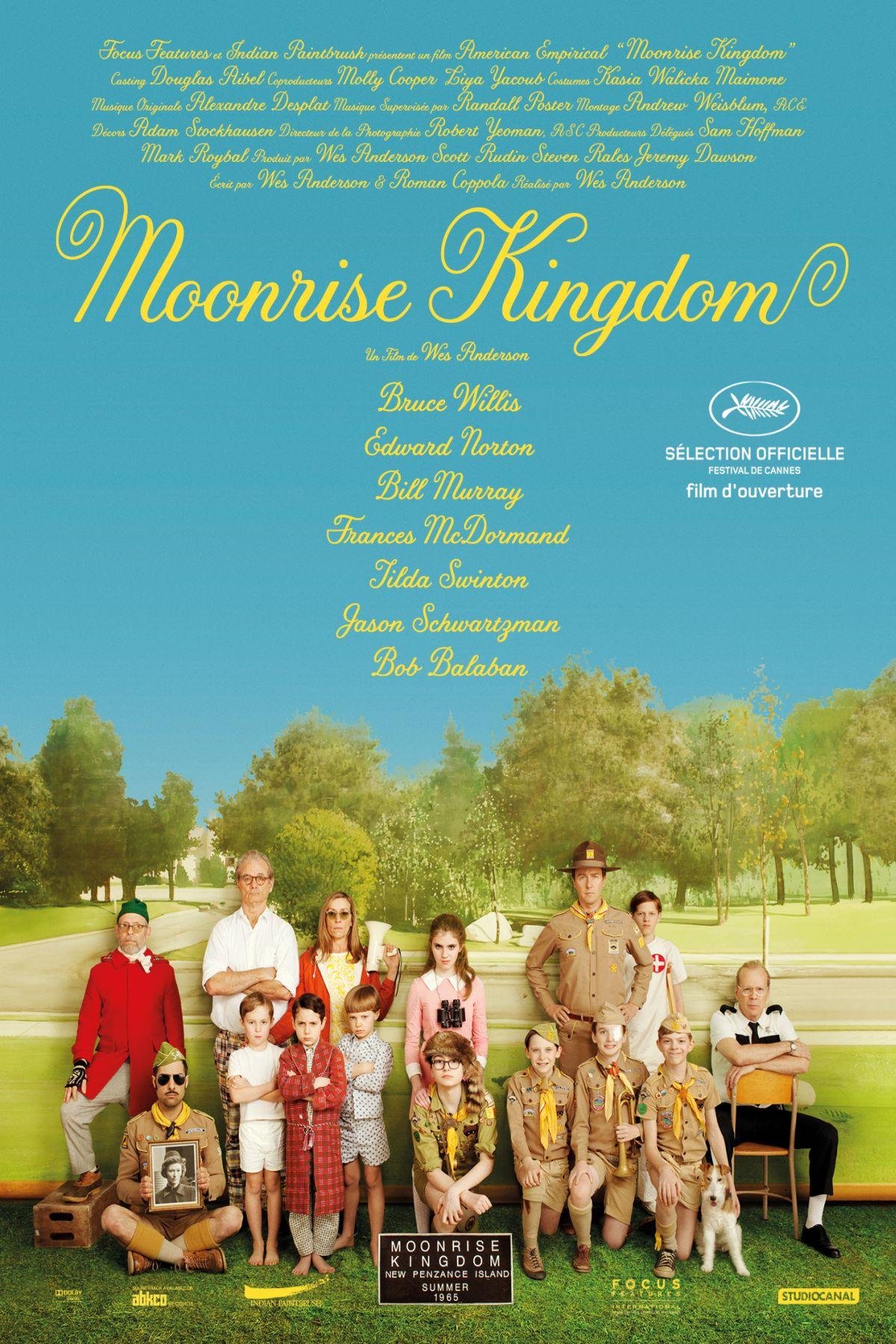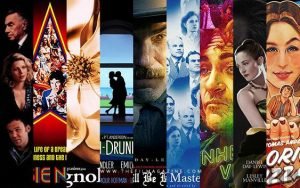Exploring the Quirky World of Wes Anderson: A Journey Through His Iconic Films
Welcome to the quirky world of Wes Anderson, where everything is meticulously crafted and every frame is a work of art. Anderson is known for his distinct style, characterized by whimsical characters, vibrant colors, and a touch of nostalgia. His films are a true feast for the eyes and have captivated audiences for years. In this article, we will take a journey through his iconic films and explore the unique and charming elements that make them stand out. So sit back, relax, and let’s dive into the whimsical world of Wes Anderson.
Welcome to the quirky world of Wes Anderson, where everything is meticulously crafted and every frame is a work of art. Anderson is known for his distinct style, characterized by whimsical characters, vibrant colors, and a touch of nostalgia. His films are a true feast for the eyes and have captivated audiences for years. In this article, we will take a journey through his iconic films and explore the unique and charming elements that make them stand out. So sit back, relax, and let’s dive into the whimsical world of Wes Anderson.

Introduction to Wes Anderson and his unique style of filmmaking
Wes Anderson is a highly acclaimed American filmmaker known for his unique style of storytelling and filmmaking. He is known for directing and writing films that are characterized by their quirky and eccentric characters, stunning visuals, rich color palettes, and intricate set designs. Anderson‘s films are a testament to his love for visual storytelling and his ability to infuse his personal touch into every frame. From his early works like “Bottle Rocket” and “Rushmore” to his recent works like “Isle of Dogs” and “The French Dispatch,” Anderson’s films are a true reflection of his creativity and his distinct approach to filmmaking.
Overview of Anderson’s filmography and the themes that run throughout his work
Wes Anderson‘s filmography is a work of art in itself. Known for his quirky, distinctive style, Anderson‘s films are characterized by themes of family, childhood, and the search for identity. His films often employ an ensemble cast, with recurring actors such as Bill Murray, Owen Wilson, and Jason Schwartzman. Anderson‘s use of pastel colors, symmetrical framing, and whimsical soundtracks make each film a visual and audio delight. Anderson‘s films are not just entertaining, but also thought-provoking, as they explore themes of nostalgia, isolation, and the complexities of human relationships. His unique style and storytelling have earned him a cult following among cinephiles, and his filmography remains a testament to his talent and originality.
Analysis of Anderson’s use of color, symmetry, and framing in his films
Wes Anderson is known for his unique style of filmmaking, and a significant part of his cinematic signature lies in his use of color, symmetry, and framing. Anderson‘s films stand out with their distinctive color palettes, which are often composed of pastel shades and vivid contrasting hues. The symmetry and framing of his shots are carefully planned, with perfectly centered and balanced compositions that create an aesthetic of order and precision. By analyzing Anderson‘s use of color, symmetry, and framing, we can gain a deeper understanding of how he uses visual elements to create his distinctive style and convey his artistic vision through his films.

Exploration of Anderson’s recurring motifs, such as dysfunctional families and oddball characters
Wes Anderson‘s films are known for their quirky characters and dysfunctional families, which have become recurring motifs throughout his filmography. Anderson explores these themes in unique ways, creating an idiosyncratic world that is both fantastical and grounded in reality. From the troubled Tenenbaum family in “The Royal Tenenbaums” to the eccentric and dysfunctional family in “The Darjeeling Limited,” Anderson’s films offer a nuanced and often humorous exploration of the complexities of family dynamics. His oddball characters, such as Steve Zissou in “The Life Aquatic with Steve Zissou” and Gustave H. in “The Grand Budapest Hotel,” are equally memorable and serve to create a world that is both charming and absurd. Anderson‘s exploration of these themes has made him one of the most distinctive and beloved filmmakers of his generation.
Examination of the music and sound design in Anderson’s films
When it comes to examining the music and sound design in Wes Anderson’s films, one can’t help but be impressed by the director’s unique and eclectic choices. Anderson‘s films are known for their quirky and whimsical nature, and the music and sound play a significant role in creating that atmosphere. From using classic rock tunes to layered soundscapes, Anderson‘s films always offer a delightful and unexpected auditory experience. Additionally, Anderson often collaborates with frequent composer Mark Mothersbaugh to create original scores that perfectly complement the visuals on screen. Overall, the music and sound design in Anderson’s films are an integral part of the director’s signature style and contribute to the overall charm and appeal of his movies.
Discussion of Anderson’s collaborations with actors and crew members, including Bill Murray and Owen Wilson
Wes Anderson, the quirky director behind some of the most visually stunning films, is known for his collaborations with actors and crew members. Bill Murray, a frequent collaborator, has appeared in almost every Anderson film since Rushmore. Owen Wilson, another frequent collaborator, has co-written several of Anderson’s films. The chemistry between Anderson and his collaborators is evident on screen, with the actors seamlessly embodying the eccentric characters that Anderson creates. Anderson’s attention to detail and artistic vision are brought to life by his crew members, who share his passion for creating beautiful and unique cinematic experiences.

Examination of the critical and commercial reception of Anderson’s films
Examining the critical and commercial reception of Wes Anderson’s films provides insights into his unique style and appeal. Anderson‘s trademark quirky characters, meticulously designed sets, and distinctive soundtrack choices have garnered a devoted fan base, resulting in box office success. However, his films have also faced criticism for their perceived artificiality and lack of diversity in casting. Despite this, Anderson‘s films continue to captivate audiences with their offbeat humor, whimsical storytelling, and visually stunning cinematography. By analyzing the reception of his films, we can gain a deeper understanding of Anderson’s artistic vision and the ways in which it resonates with audiences.
Exploration of the influence of literature and art on Anderson’s work
Wes Anderson‘s films have a unique and distinct visual style that is heavily influenced by literature and art. Anderson‘s love for literature is evident in his films’ intricate and carefully crafted storylines. He often adapts books and stories, like Roald Dahl’s “Fantastic Mr. Fox” and Stefan Zweig’s “The Grand Budapest Hotel,” into films that showcase his quirky and whimsical storytelling. Anderson‘s love for art is also apparent in his films’ stunning visuals, with every shot carefully framed and color coordinated like a painting. His films are a perfect blend of literature and art, resulting in a cinematic experience that is both visually enchanting and narratively captivating.
Analysis of Anderson’s approach to writing and directing his films
Wes Anderson‘s approach to writing and directing his films is unique and distinctive. He has a distinct visual style, characterized by symmetrical compositions, bold colors, and meticulously designed sets. Anderson is known for his attention to detail, as well as his ability to create quirky and memorable characters. He has a talent for crafting dialogue that is both funny and poignant, and his films often include complex narrators and nonlinear storylines. Anderson‘s films have a strong emotional impact, and his use of music and sound is often a key element in setting the mood and tone of his movies. Overall, Anderson‘s approach to filmmaking is one that is both creative and deeply thoughtful, which is why his movies have become so beloved by audiences around the world.
Conclusion reflecting on the enduring appeal of Wes Anderson’s films and the impact they have had on contemporary cinema
In conclusion, Wes Anderson‘s films have had an undeniable impact on contemporary cinema. With their unique visual style, quirky characters, and charming narratives, Anderson‘s movies have captured the hearts of audiences worldwide. His films often explore themes of identity, family, and the struggles of growing up, resonating with viewers across generations. Anderson’s use of witty dialogue, pastel color palettes, and intricate set design have also become iconic trademarks of his work. It is no wonder that his films continue to inspire other filmmakers and remain relevant in today’s ever-evolving film industry. The enduring appeal of Wes Anderson’s films is a testament to his skill as a director and storyteller, and we can only hope to see more of his fantastic creations in the future.
For more information about Wes Anderson films, including movie details, cast information, etc..
check out the filmaffinity page.



